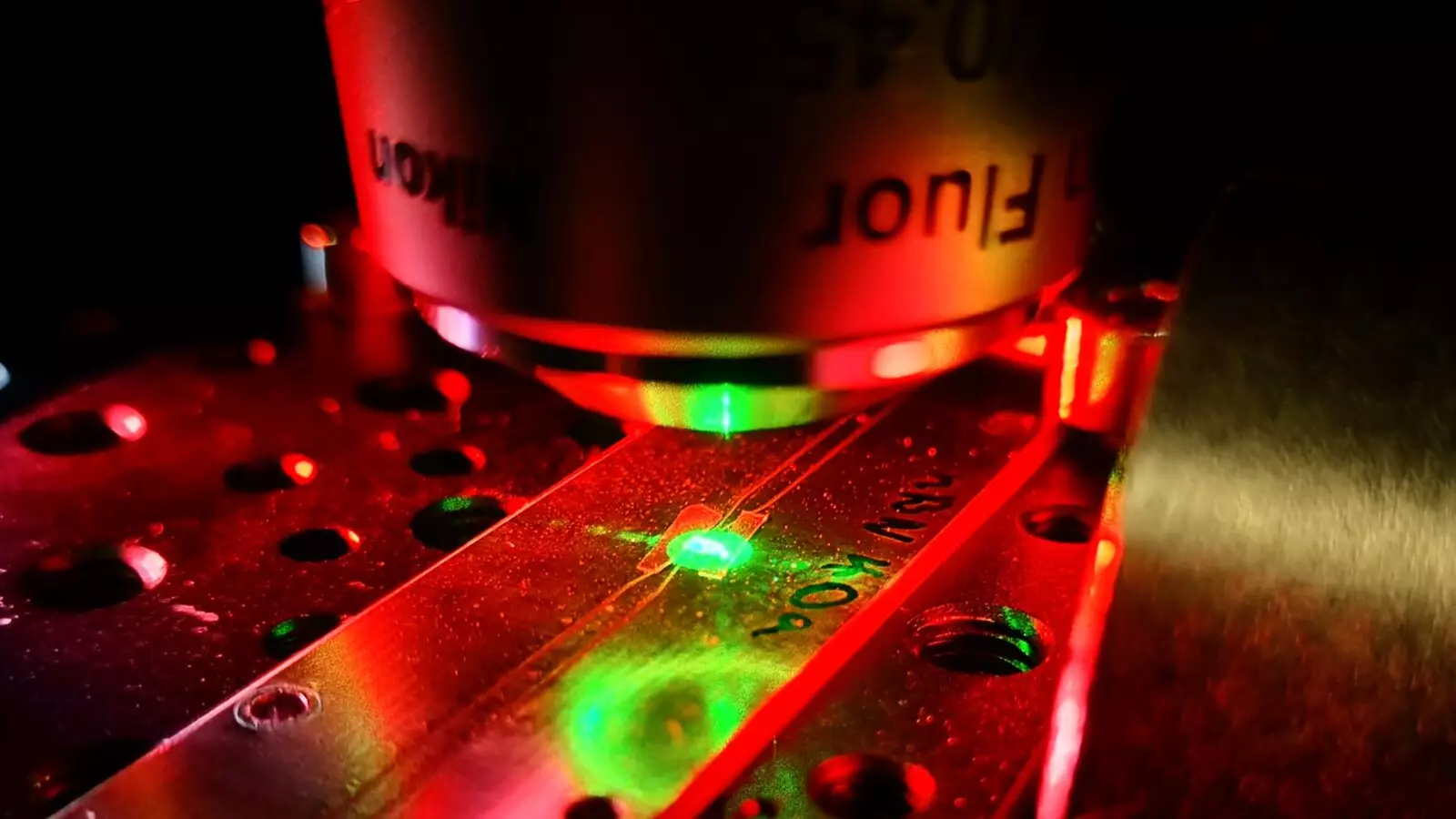Quantum sensing technology has taken a groundbreaking step forward with the development of a new 2D quantum sensing chip using hexagonal boron nitride (hBN) by researchers at TMOS, the ARC Center of Excellence for Transformative Meta-Optical Systems, and RMIT University. This innovative sensor has the ability to detect temperature anomalies and magnetic fields in any direction, opening up a world of possibilities for cheaper and more versatile quantum sensors.
Traditionally, quantum sensing chips have been made from diamond due to its robust nature. However, diamond-based sensors have limitations, such as only being able to detect magnetic fields when aligned in a specific direction. This restriction leads to blind spots and necessitates the use of multiple sensors at varying degrees of alignment, making operation more complex and limiting versatility in different applications. Additionally, the rigid and three-dimensional nature of diamond sensors restricts their ability to get close to samples that are not perfectly smooth.
To overcome these limitations, TMOS researchers are pioneering a new quantum sensing platform using hexagonal boron nitride (hBN). These hBN crystals consist of atomically thin layers, allowing the sensing chips to adjust and conform to the shape of the sample being studied, enabling them to get much closer to the sample than traditional diamond sensors. The flexibility of hBN opens up new possibilities for quantum sensing technology.
One of the key breakthroughs in this research involves the discovery of a carbon-based defect in hBN that can detect magnetic fields in any direction. By conducting a Rabi measurement experiment and comparing the results with the well-known boron vacancy defect in hBN, researchers identified this new defect as a spin half system. This half spin nature enables the sensor to detect magnetic fields in all directions, providing a significant advancement in quantum sensing technology.
The team’s findings demonstrate the potential of optically addressable spin defects in solids as a vital tool in quantum materials research. The unique properties of hBN, including its 2D form, offer advantages in getting closer to samples and operating as quantum sensors. The directional independence of the sensor opens up new possibilities in various applications, including biological systems and room temperature quantum systems.
The development of this 2D quantum sensing chip has far-reaching implications for future applications, including in-field identification of magnetic geological features and radio spectroscopy across a wider band. The potential for exploring new physics and engineering sensor devices for optimal performance is an exciting prospect for further research and development in the field of quantum sensing technology.
The innovative use of hexagonal boron nitride in developing 2D quantum sensing chips has paved the way for revolutionary advancements in quantum technology. The unique properties of hBN, combined with the discovery of carbon-based spin defects, offer new opportunities for versatile and high-performance quantum sensors. This research represents a significant step forward in the quest for more efficient and cost-effective quantum sensing solutions.


Leave a Reply